After years of full time world-wide travel, it pains us to see Americans keep making some of the most common travel mistakes and travel fails out there.
When you travel, it’s a given: things don’t always go according to plan. We’ve been responsible for rookie travel mistakes ourselves on more than one occasion. True story!

We offer assistance in several online travel forums. As well, American friends and relatives often consult us for advice on upcoming plans. What we’re seeing, over and over again, are the same exact travel fails which could have easily been avoided.
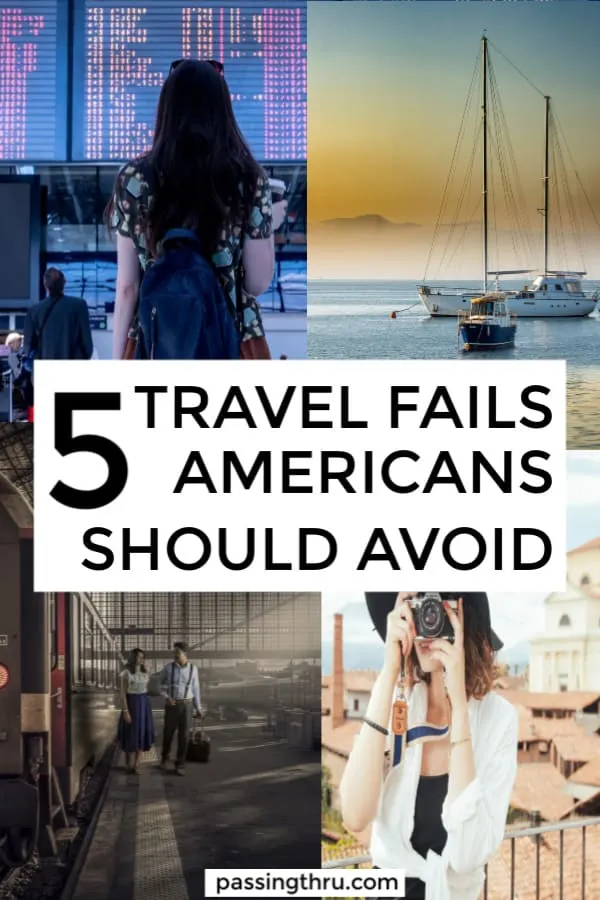
This post contains affiliate links and/or references to our advertisers. We may receive compensation when you click on or make a purchase using these links.
Let’s look at the unforced travel errors Americans make almost routinely, along with actionable suggestions on how to avoid them:
1. Cramming too many activities and destinations into an impossible itinerary. This is by far the biggest and most common travel mistake Americans make. We’re guilty of it ourselves.
Tip: Check out a popular and provocative post we wrote some time ago:
“Refining Your Bucket List: How A Bucket List Ruins Travel and 5 Things You Can Do About It”
We’ve been conditioned as Americans to have the most minimal vacation time in the first world, and this shows in the way we plan things. Or maybe we’re just overly optimistic, who knows?

Needless to say, an over-planned travel itinerary with too many things and not enough time is a recipe for disaster and disappointment. You’re inevitably going to run out of steam, or a domino effect of fails will ensue.
How many people have you heard say, “I need a vacation to recover from my vacation”? Yet, this is so easily avoidable.

Our rules of thumb:
- Don’t forget travel days. It takes most of a day (or more, depending on your destination abroad) to get there, and the same coming back. If you have an 8-day vacation, this little fact really gets you six. If you’re visiting more than one destination, getting from Point A to Point B takes time.
- Spend at least three nights in a destination. This is the minimum amount time to see the sights and soak up the atmosphere at a leisurely pace.
- Plan for unscripted time. When are you going to linger in a sidewalk cafe or charming plaza? Is your schedule going to prevent you from popping into an interesting storefront, or climbing up to take advantage of a panoramic view?
- Go surface instead of air. This is particularly advisable in regions where destinations are closer together. Going by bus, car or rail bypasses the hassles of airports and transfers into city centers, where you likely want to be.
Tip: A Eurail pass allows you unlimited travel on all sorts of trains, and gets you discounts on ferries and other perks. See our guide: How to Tour Europe by Train Using Eurail First Class Passes
2. Expecting foreign countries to be more accommodating. Stop it! This is the height of condescension and privilege, and it will do nothing to endear you as a visitor.

It’s unrealistic to expect locals to speak English fluently in certain regions, even less so to find signs and menus written in English in others. Adjust!
In these cases tools such as Google Maps and Translate will be your best friend. Plan ahead and store key phrases on your phone or in a notepad.
Other times, you may have to point to a photo on the menu or bring one up on your phone. Pete has shown photos of fried eggs in Russia and Vietnam; in China, I showed a picture of a chicken.

Make sure you have travel adapters to power your electronics appropriately and take note of differences in voltage so you don’t fry your favorite appliance.
Pop a local SIM card into your phone upon arrival for the cheapest data access. Keep your US SIM in a safe place for re-use once you return. Your US carrier may work abroad, but our experience is that tower coverage is spotty, or roaming prices are prohibitive.
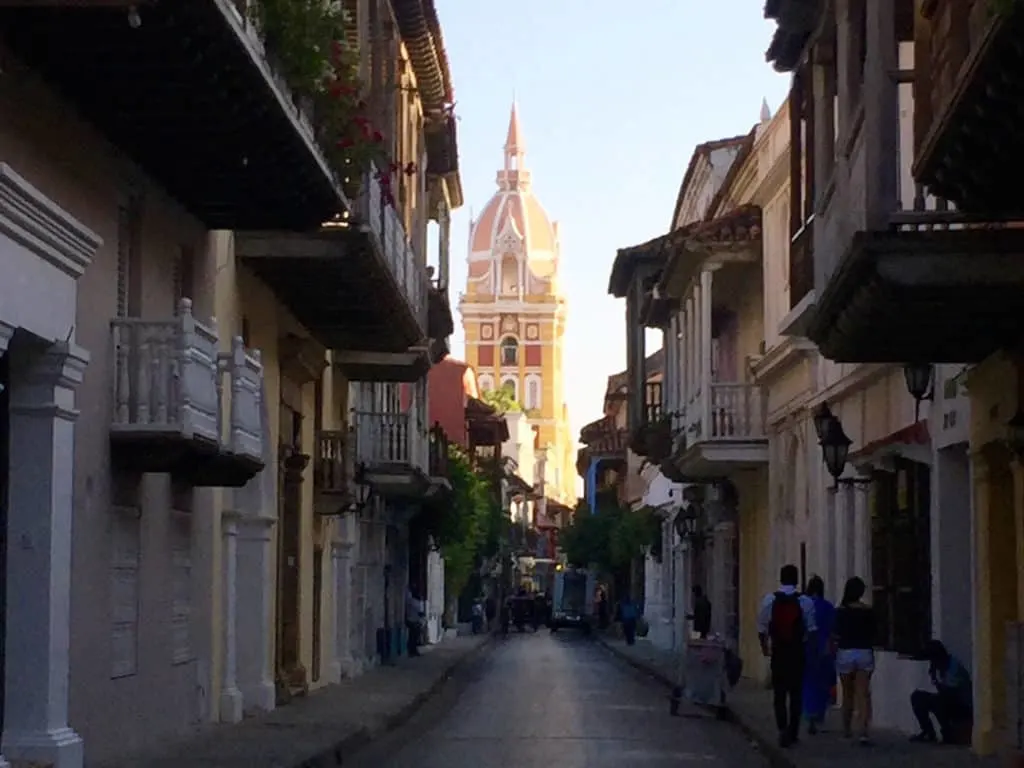
Get the local currency from a bank ATM upon arrival. Make sure your card issuer knows your travel plans. Watch out for shady street ATMs or offers to exchange currency.
Tip: Consider RFID wallets to protect your finances and identity.
3. Complaining that popular places are too crowded. There’s a reason popular places are popular. You’re not going to have them to yourself, unless perhaps you go in the shoulder or off-season.
Example of how to enjoy a popular destination that is often considered over-touristed: Off Season Mallorca is Better: Discover Unique Things to Do and Best Places to Stay in Mallorca
You can still enjoy typically touristy activities, though. The best preparation is information. Know yourself, prioritize your interests and know what to expect.
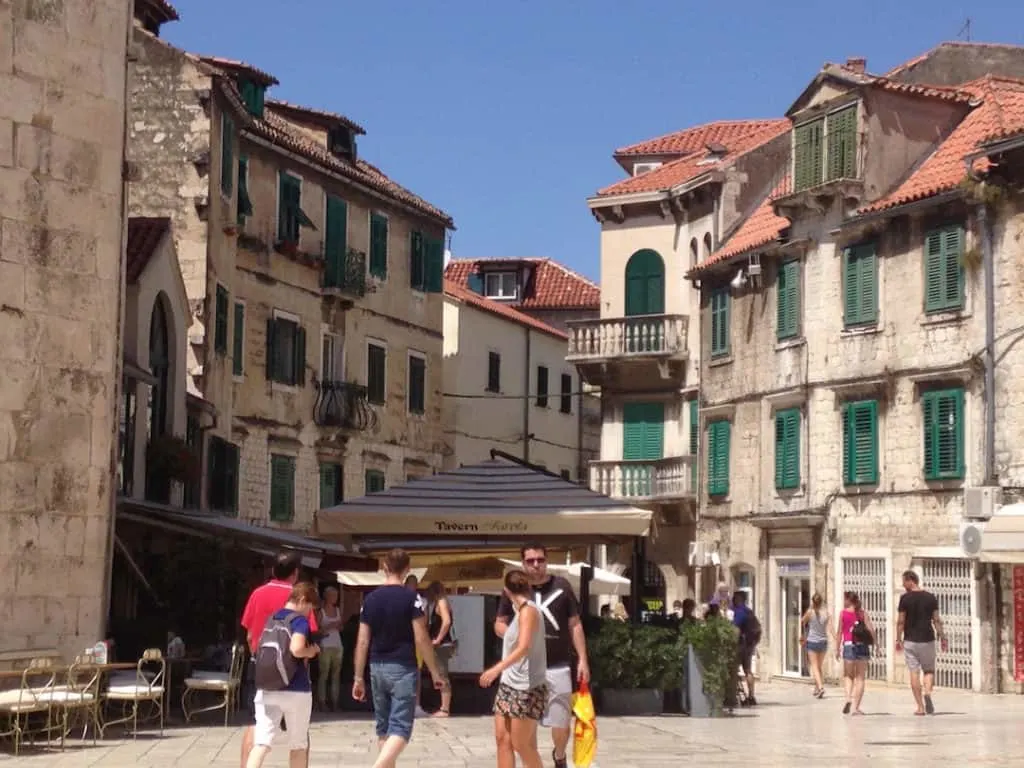
Tip: Consider a lengthier stay in locations where cruise ship passengers disembark for just several hours. When they leave, you can enjoy the location at your own pace. For an example: see our post on Diocletian’s Palace: Living in History, which details how and why you should still consider a visit to highly popular Split, Croatia despite the crowds.
If you don’t do well in crowds or can’t stand waiting in line, skip the line tickets or private tours after hours are for you.
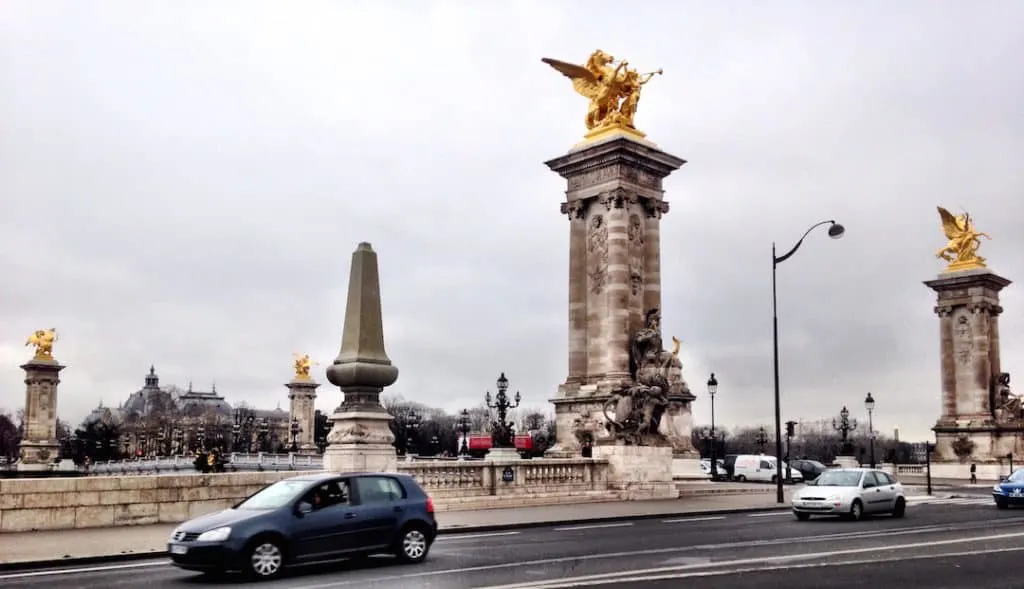
Maybe you don’t need to deep dive into every single thing a destination has to offer. You can get the gist of a place on an introductory walking tour or a hop-on, hop-off bus route. Take note of the items that interest you most and return to them in more depth later.
Tip: Our partner, Get Your Guide, has hundreds of skip-the-line, hop-on bus, and walking tour options in destinations all over the world.
Sometimes just a block or two away from the main streets of a popular destination lies a different world. Do your homework ahead of time: enlist recommendations from locals or folks who have visited extensively.

Example: We toured Istanbul with a local and this was the surprising result: Peaceful Places in Istanbul.
4. Over-packing and hauling along way too much crap. We found that it only took four years of full-time nomadic travel to get us completely over packing too much!

No, seriously, though, Americans are notorious over-packers. A subset of these travelers is the person who tries to avoid checked baggage fees and crams everything into an over-stuffed carry-on.
Tip: See one of our most popular posts: Choosing the Best Personal Item Bag for Air Travel Today for airplane cabin-ready solutions.
Use space-saving products like packing cubes and travel-sized toiletries and appliances to take advantage of every inch of space you have.

Tip: Rule of thumb for women is four bottoms (skirts or pants), seven tops for a variety of temperatures, one or two cardigans, one coat, three pairs of shoes (a boot or close-toe, sandals, walking/trainers), seven days’ worth of undies, a couple of scarves, toiletries, and you’re set in a carry-on. This is sufficient for a month or more of travel.
5. Failing to obtain proper identification and visas prior to travel. It’s amazing to us that Americans still don’t have passports, but visa compliance issues are common travel mistakes, too.
In the forums, there’s a rant just about every week about how somebody didn’t know they needed a passport to go to Mexico or Canada. (And why do mainlanders think they need a passport to go to Hawaii?)

Or, somebody will have procrastinated and is panicking that their passport application won’t be processed in time for their bucket list trip. People, just get a passport, whether you’ve got travel plans now or not. It’s good for ten years, so you’ll be set.
Tip: A passport cover will keep yours secure and looking good as new for a long time. Check out the custom designs in our online store, here.
Are you up on the visa requirements for the destinations you’ll be visiting? We watched friends get stuck at the border going in and out in all kinds of places.
And, we goofed up on Indian visas ourselves. As well, Pete had to make a border run to Costa Rica while we were in Panama in order to keep driving legally after 3 months.
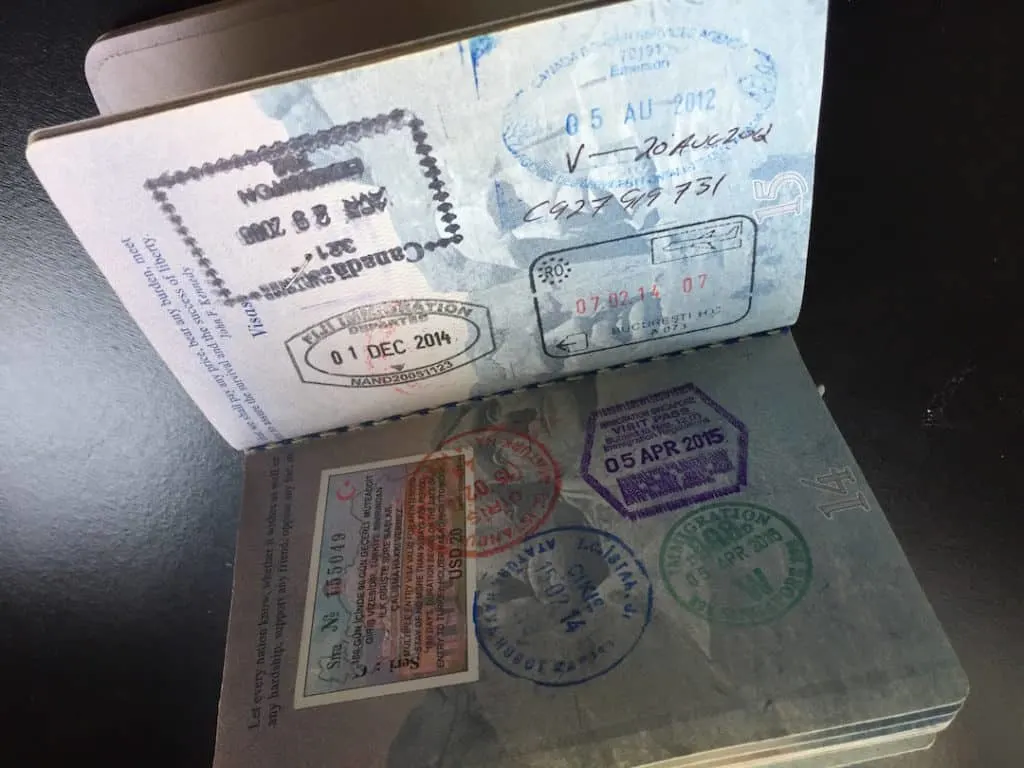
Be aware of changes and penalties regarding length of stay, types of visas that apply to you (tourist vs working, for example), ease of renewal, and any temporary or permanent restrictions due to political issues.
Tip: If the above is intimidating (and it can be), consider a tour or cruise company that handles those details on your behalf.
We’re hoping that this discussion provides food for thought. Travel is just about the most fun thing to do in the world that we can imagine, and we want more Americans to not only consider it, but to have successful experiences.

Avoiding these common travel fails will go a long way toward that end! Bon voyage!
Pinnable Image:
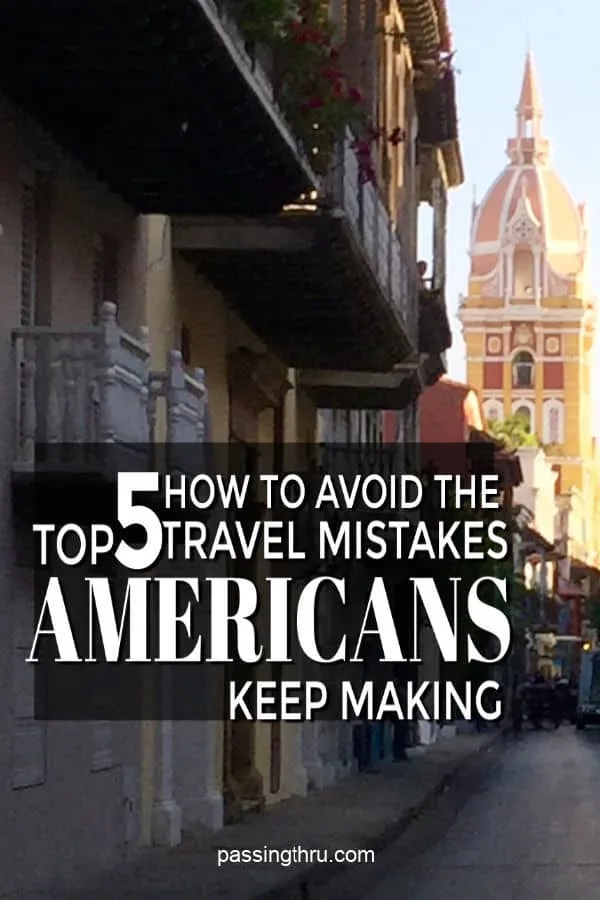
Tips for Trip Success
Book Your Flight
Find an inexpensive flight by using Kayak, a favorite of ours because it regularly returns less expensive flight options from a variety of airlines.
Book Your Hotel or Special Accommodation
We are big fans of Booking.com. We like their review system and photos. If we want to see more reviews and additional booking options, we go to Expedia.
You Need Travel Insurance!
Good travel insurance means having total peace of mind. Travel insurance protects you when your medical insurance often will not and better than what you get from your credit card. It will provide comprehensive coverage should you need medical treatment or return to the United States, compensation for trip interruption, baggage loss, and other situations.Find the Perfect Insurance Plan for Your Trip
PassingThru is a participant in the Amazon Services LLC Associates Program. As an Amazon Associate I earn from qualifying purchases.
To view PassingThru’s privacy policy, click here.

Gregorory Hubbs
Wednesday 6th of March 2019
Great stuff. Been traveling since birth in 1960 and seen many examples of all you described. I still am amazed at how there is a tendency for Americans to go to the locations recommended by guidebooks and the online equivalents. For example, we stayed 20 minutes from Avignon, France in a beautiful rental and no local citizens recalled seeing an American, even as Avignon was swarming. Overtourism is not just a fad word, it is a long-simmering feeling in many locations in the world, and one must try to be a "responsible" and respectful tourist to represent.
I would emphasize manners, which are often lacking as seen from the perspective of locals with whom I have lived in various countries, as well as an attempt to speak the local language out of respect. It is so very much appreciated. Imagine the converse experience, as I live in New York City, where there are so many tourists.
Thank you again.
Juergen Klein
Tuesday 4th of September 2018
Lucky I'm not American! But then other nationalites can make the same mistakes. I believe that selecting a destination off the beaten path, even if it's only a short distance from the next tourist airport, can be very rewarding.
Betsy Wuebker
Tuesday 4th of September 2018
Hi Juergen - We do, too. We've never been to a lot of places that surprise people when we mention them. :)
Rachel Heller
Tuesday 4th of September 2018
Excellent tips! I would add that Americans should make sure their vaccinations are up to date and take along any meds they take regularly in their carry-ons. At the same time, they should not assume that medical care in Europe (and much of the rest of the world) is automatically worse than American medical care and go running home at the first sign of illness. Also, they don't need to worry here in Europe about drinking the water or about finding people who speak English.
Betsy Wuebker
Tuesday 4th of September 2018
Hi Rachel - Excellent point. One aspect to Americans returning home for treatment is the lack of medical insurance coverage outside the US. Lots of policies just won't cover them, or they've failed to plan and purchase medical travel insurance. Sometimes, like in my case, it's impossible to obtain treatment because the problem is due to a known or previously unknown pre-existing condition. I would have loved to continue treatment in Colombia - I received first class care on par with the Mayo Clinic, if not better. However, my travel insurance wouldn't cover anything more than they'd already covered, so I had no choice but to return and plunge back into the maelstrom that is now U.S. health insurance.